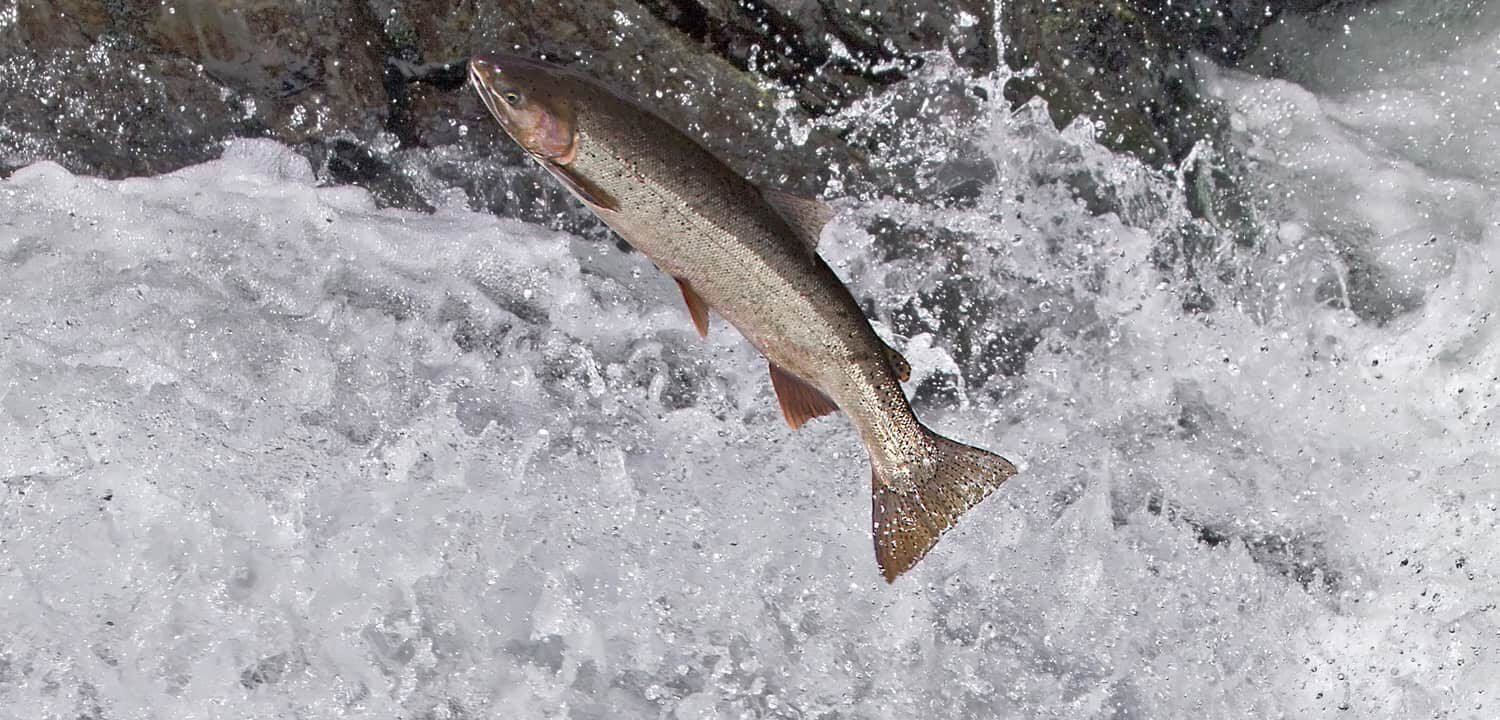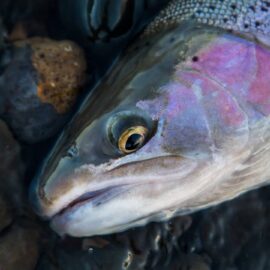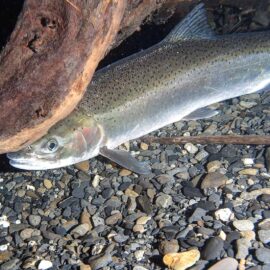Reeling from emergency steelhead fishing closures, the Washington Department of Fish & Wildlife is recruiting experts like WSC’s Jess Helsley to map a better path for steelhead management.
With steelhead runs declining up and down the coast, the Washington Department of Fish & Wildlife is looking for insight—and advice.
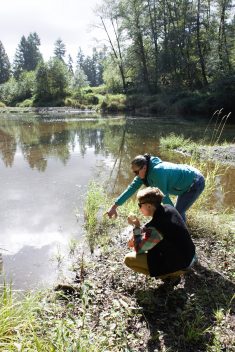
Among those lending expertise to the agency is Wild Salmon Center Washington Program Director Jess Helsley. In October, WDFW invited Helsley to join a newly-formed 12-member Ad-Hoc Coastal Steelhead Advisory Committee. The committee, created by legislative mandate as part of state funding to address coastal steelhead declines, is tasked with assisting WDFW’s development of new watershed-specific steelhead management plans.
“This is an opportunity to fundamentally change how Washington’s coastal steelhead fishery is managed,” Helsley says. “The statewide steelhead management plan provided a broad brush stroke for fishery managers. But it’s increasingly evident that we need a more refined approach.”
In addition to replacing the agency’s current plan with multiple plans tailored to specific watersheds, the new strategy also reflects a paradigm shift within WDFW toward a broader view of fishery health—one that considers criteria including steelhead productivity, distribution, and diversity alongside total abundance.
“The statewide steelhead management plan provided a broad brush stroke for fishery managers,” Helsley says. “But it’s increasingly evident that we need a more refined approach.”
According to Helsley, this more customized and comprehensive approach will help WDFW pivot steelhead management away from the crisis posture of recent years—seen in moves like emergency fishing closures and bans on recreational fishing from boats—and toward proactive restoration measures informed by an expanding body of steelhead science.
“Right now, much of the state’s coastal steelhead fishery planning essentially happens on an emergency-by-emergency basis,” Helsley says. “We’re always scrambling to react.”
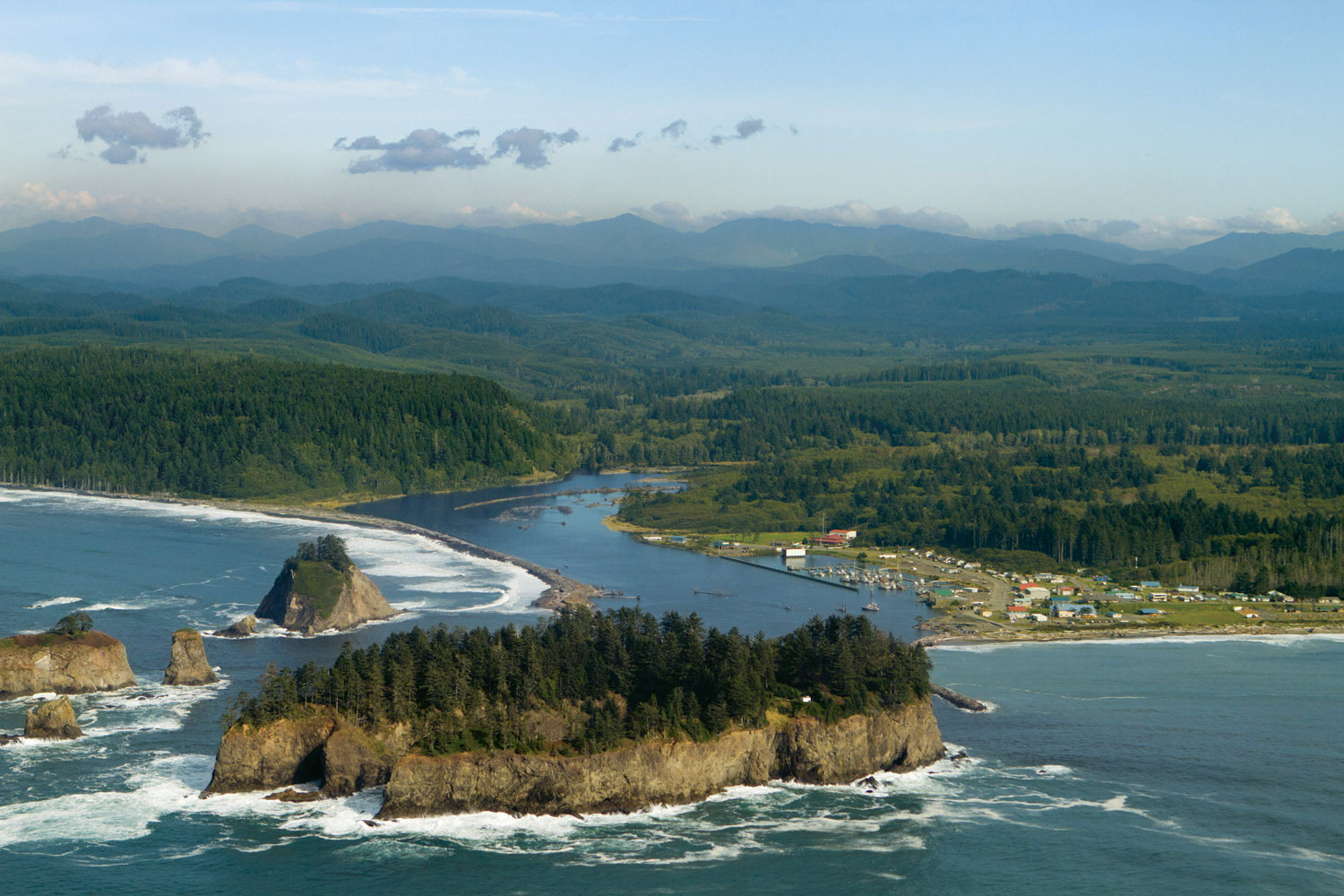
Helsley hopes that one of the advisory committee’s first tasks will be to identify data gaps that might impede watershed-specific steelhead assessments. Addressing these gaps will be crucial to the committee’s work to map thresholds that trigger local actions early enough to head off a crisis response. Once those data gaps are identified, she says, WDFW and partners can work to fill them from the larger conservation science community.
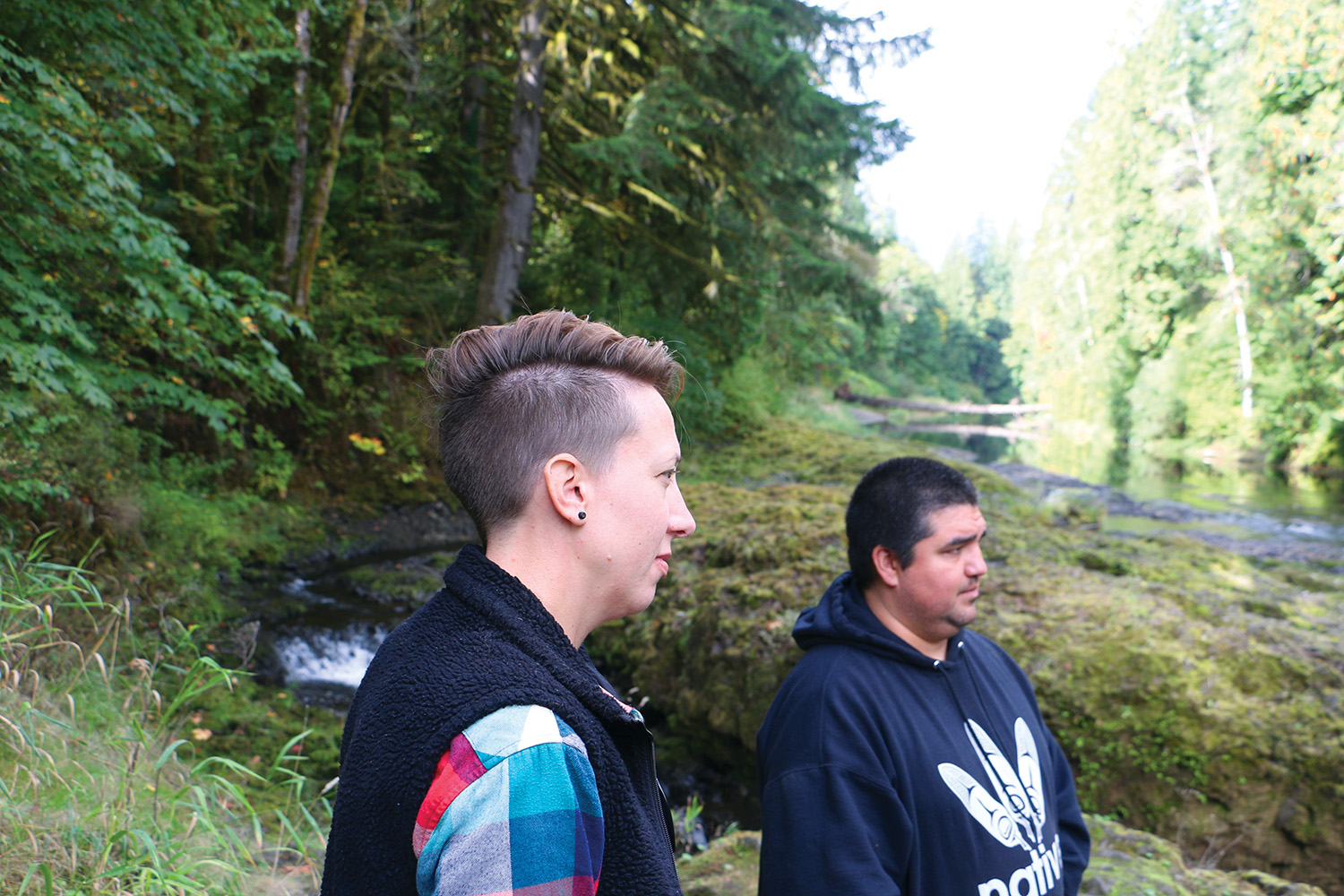
“This is a level of state commitment to coastal steelhead health that we haven’t previously seen,” Helsley says. “Increasingly, WDFW is recognizing that these populations are spiraling—and that we need all hands on deck to set coastal steelhead on a recovery path.”
The committee, whose members include sport anglers, fishing guides, research scientists, and representatives of conservation nonprofits, will have until December 2022 to finalize recommended plans for coastal watersheds.
This approach will help WDFW pivot steelhead management away from the crisis posture of recent years and toward proactive restoration measures informed by an expanding body of steelhead science.
